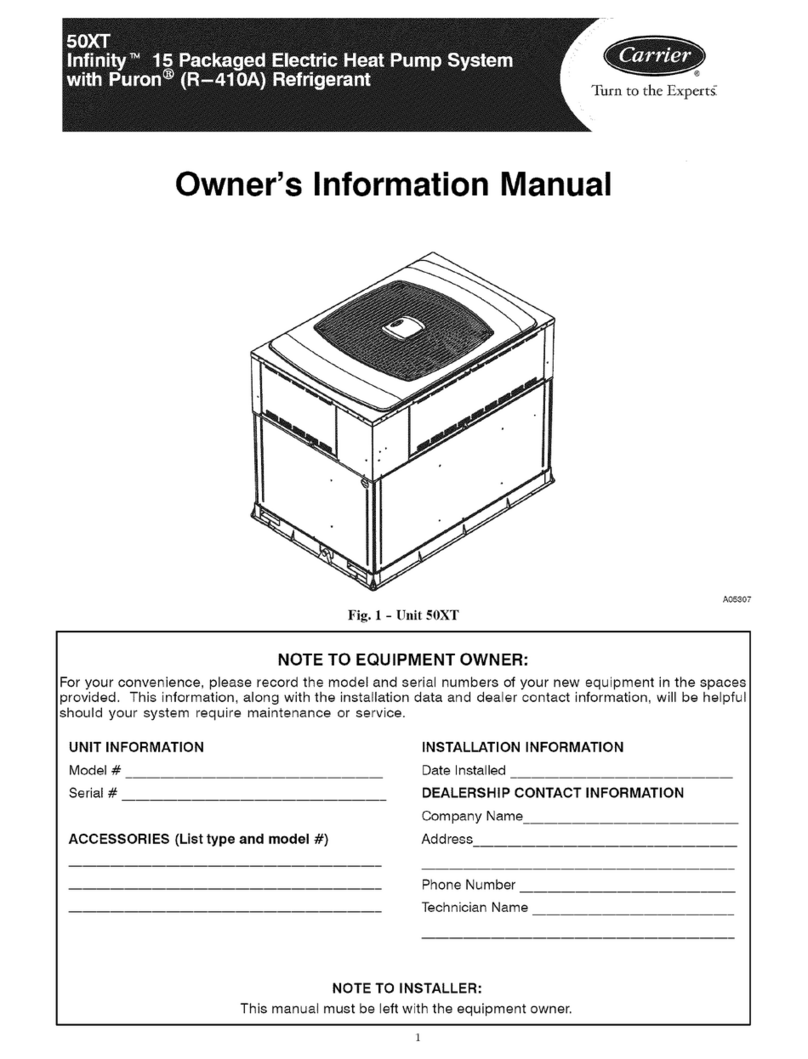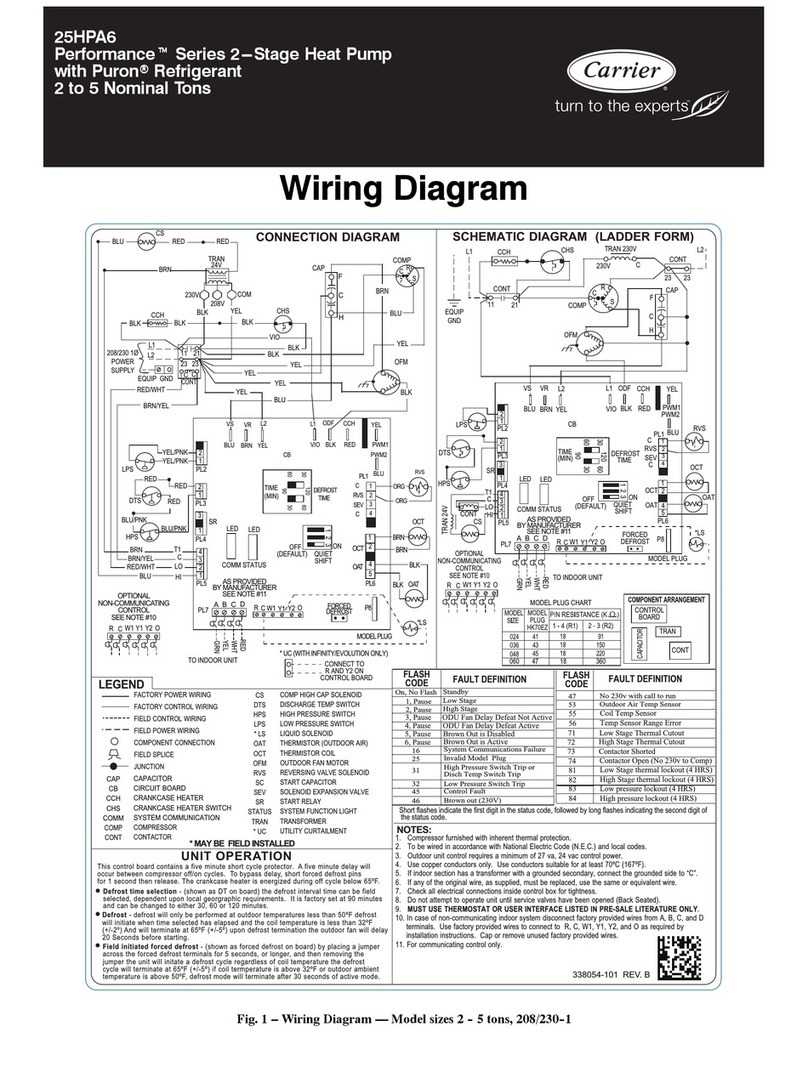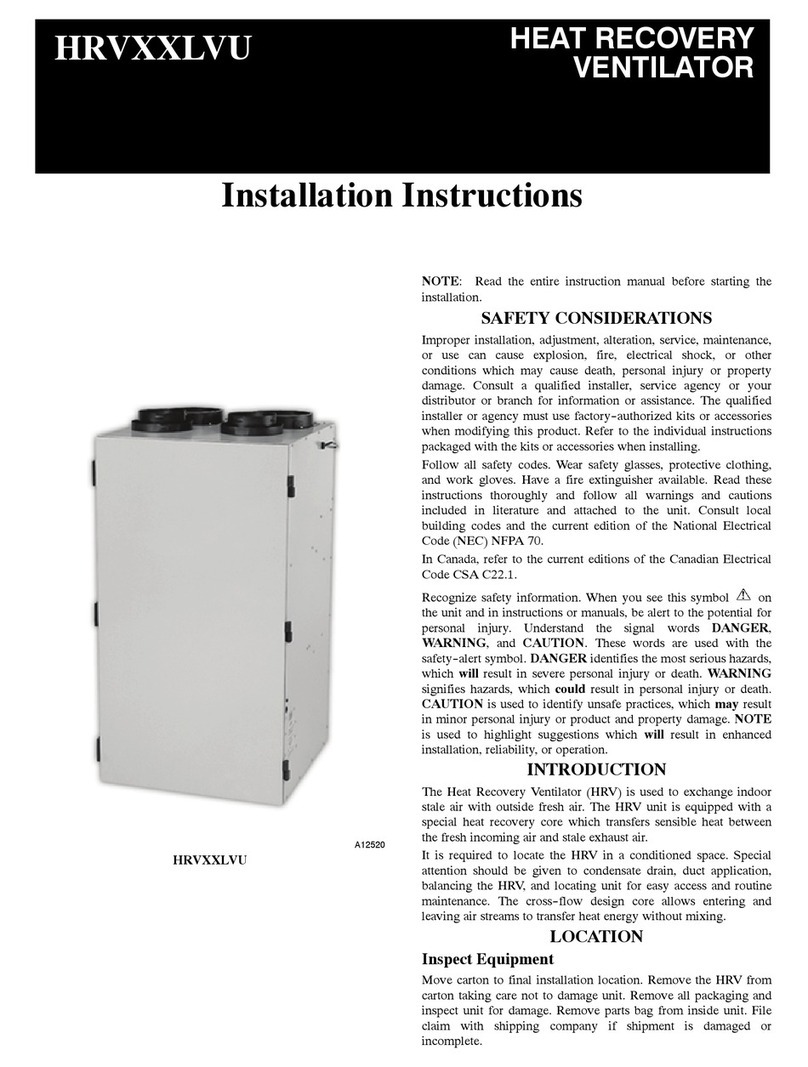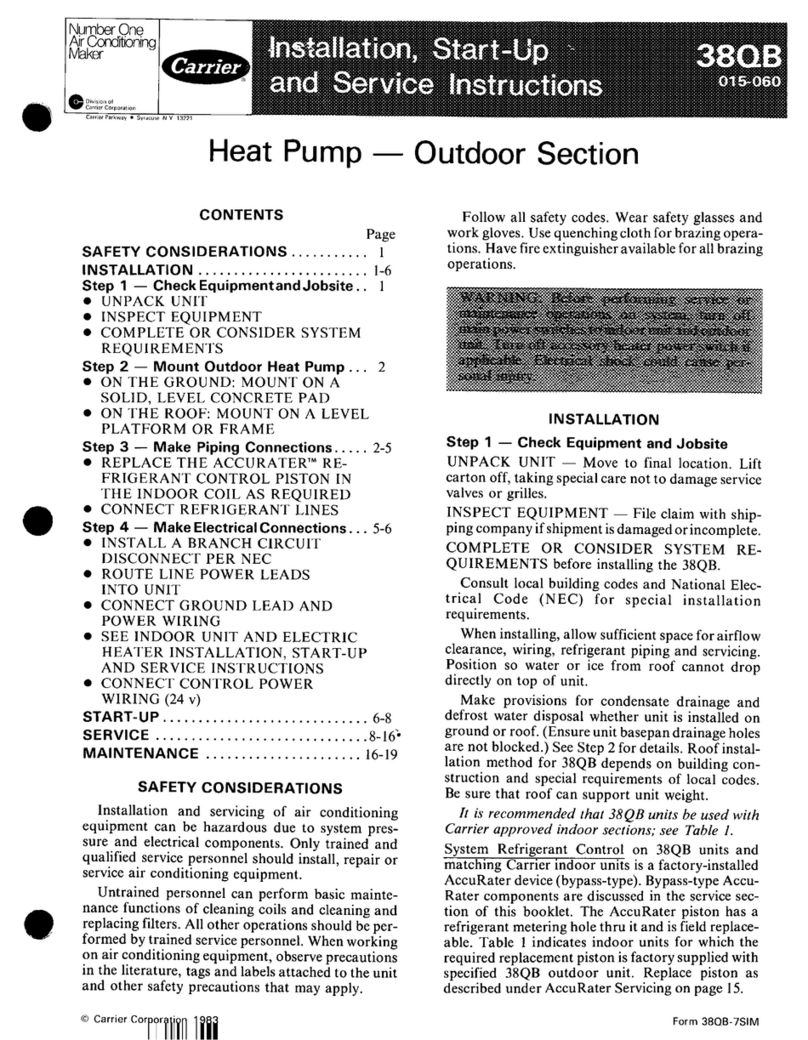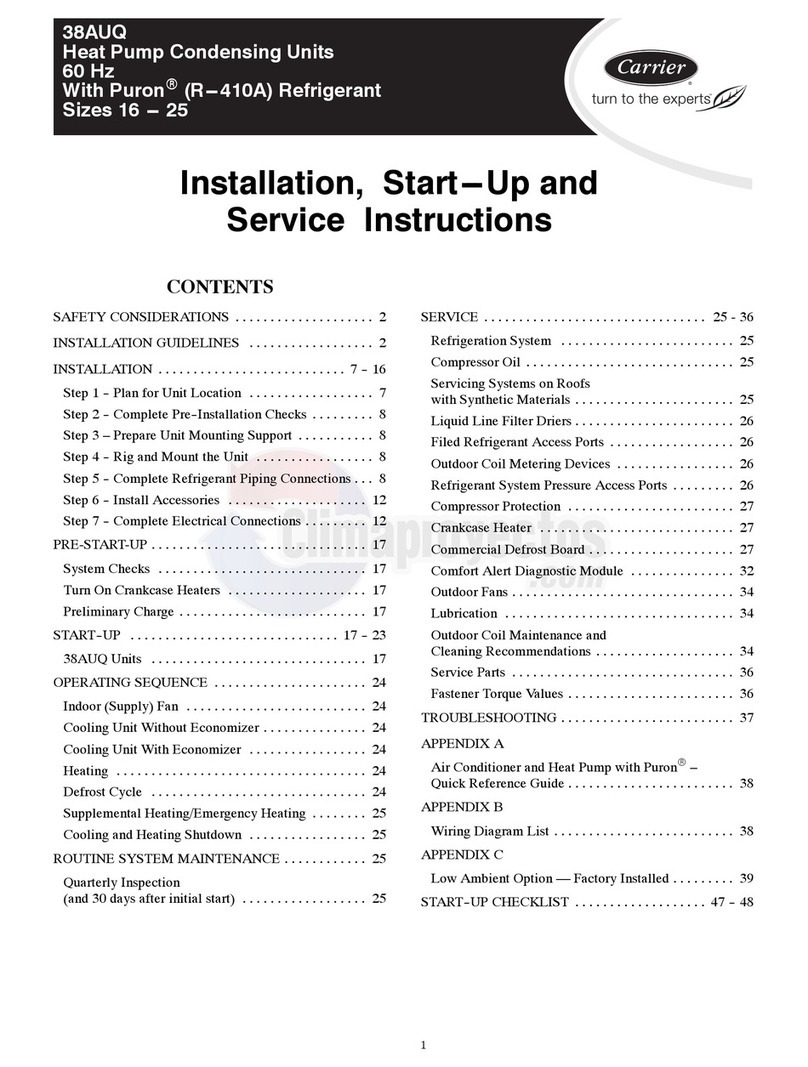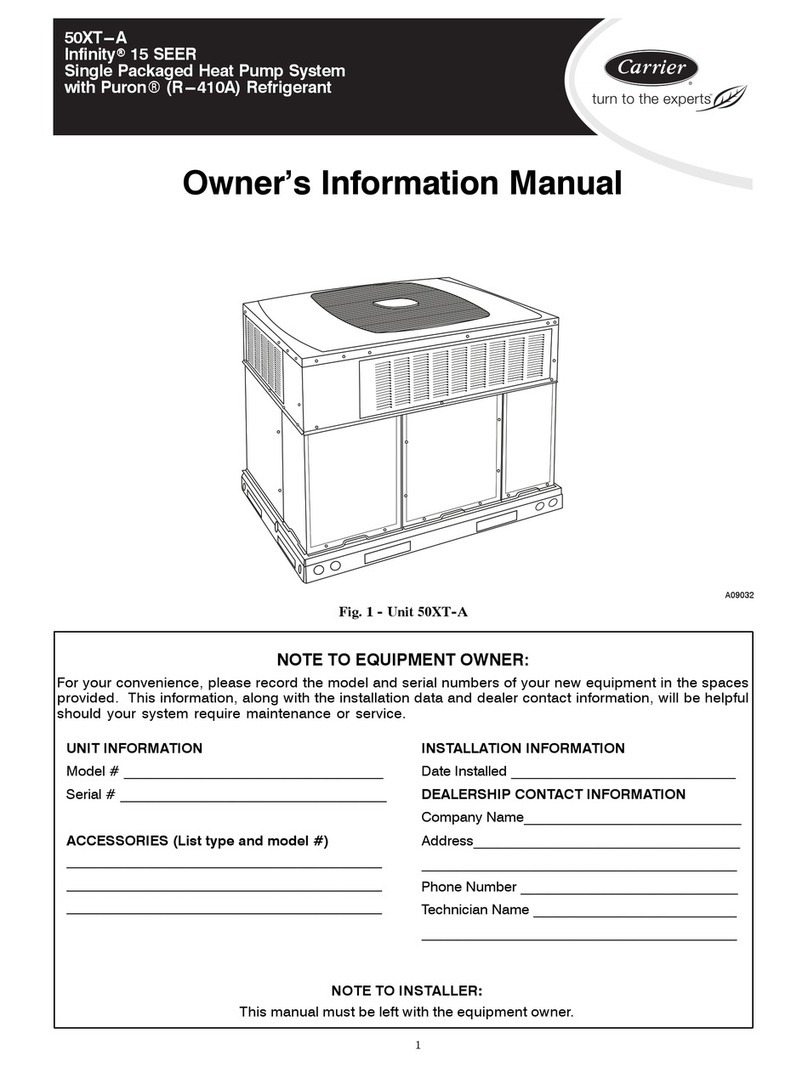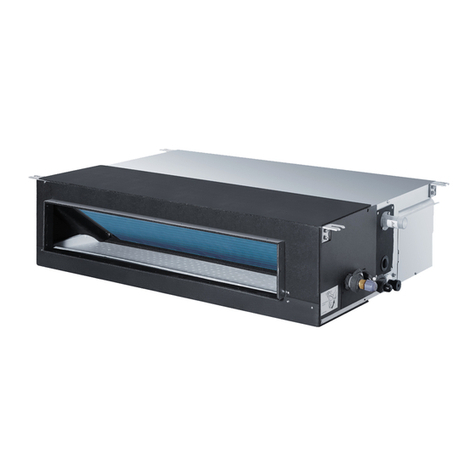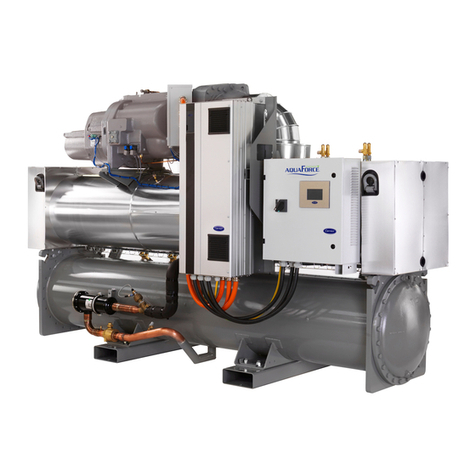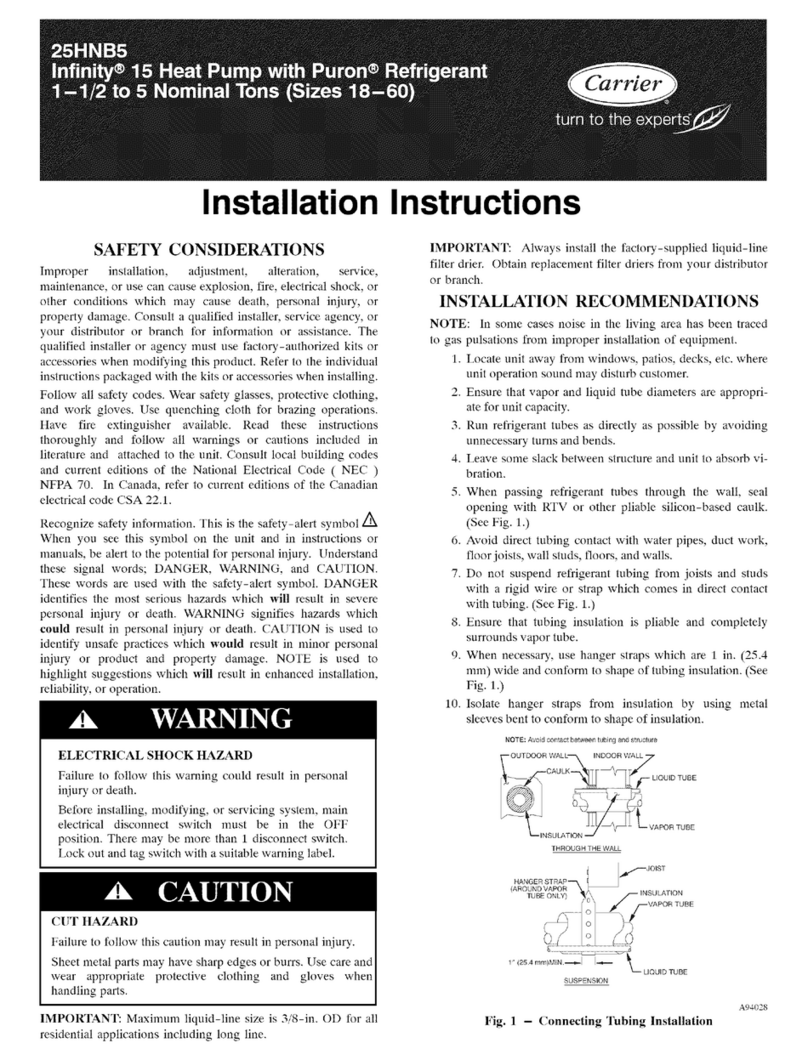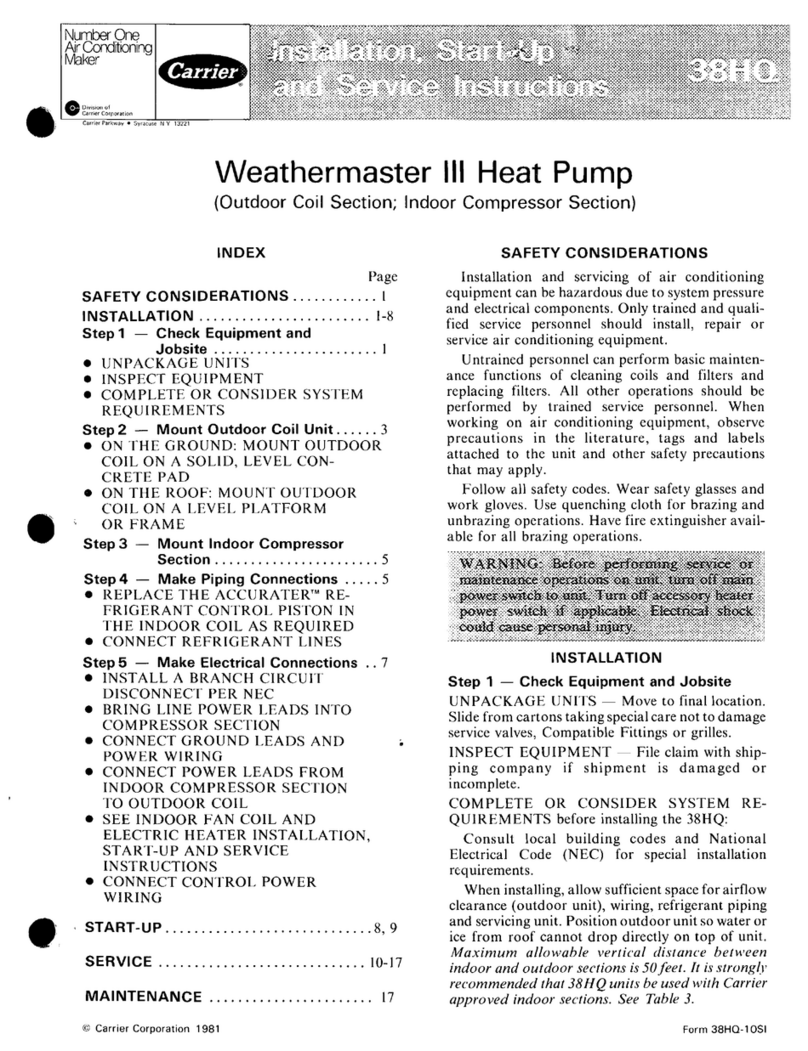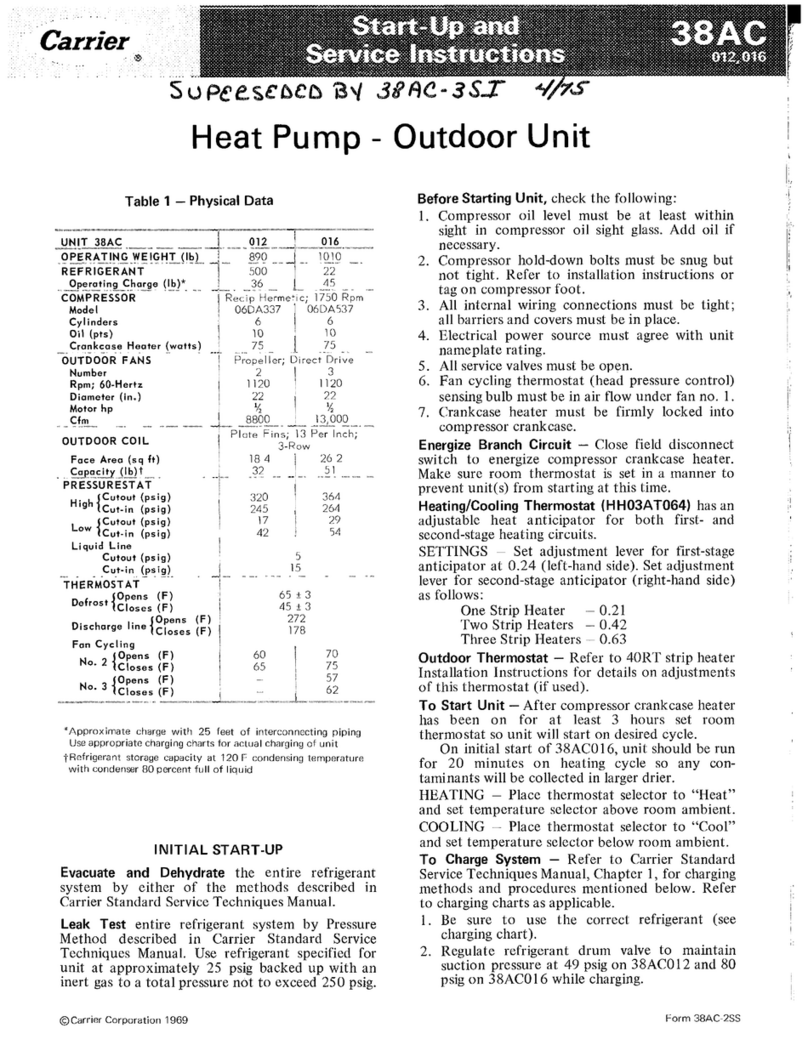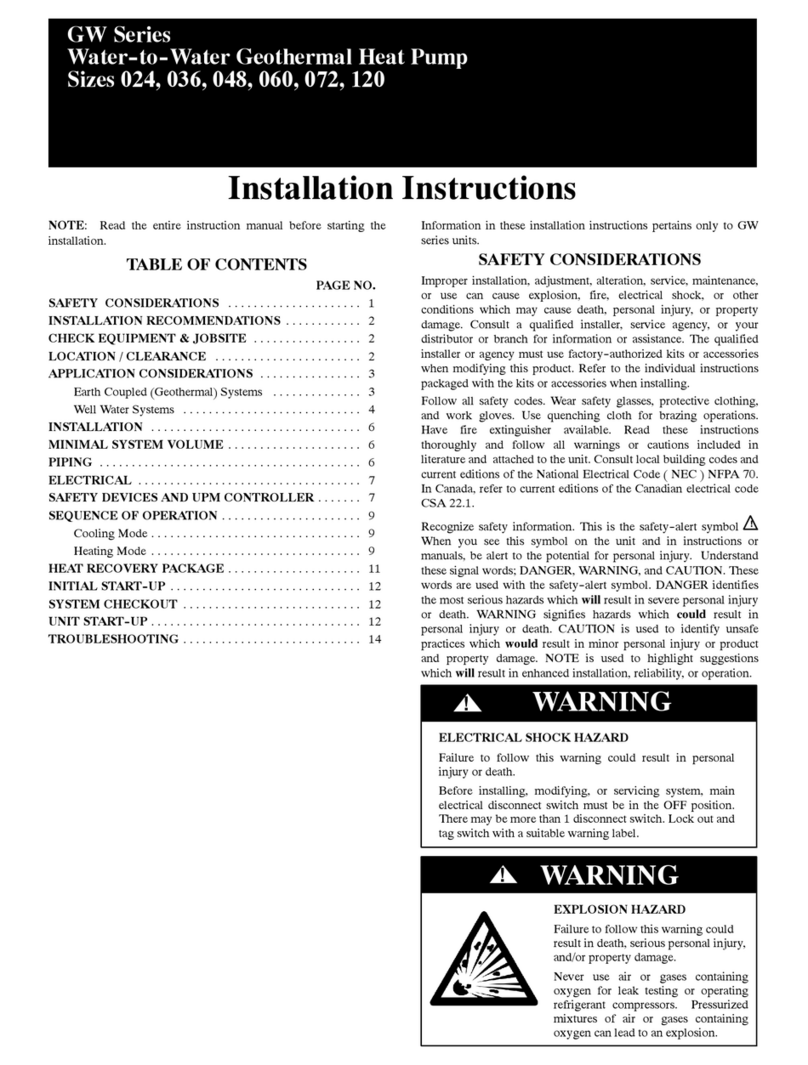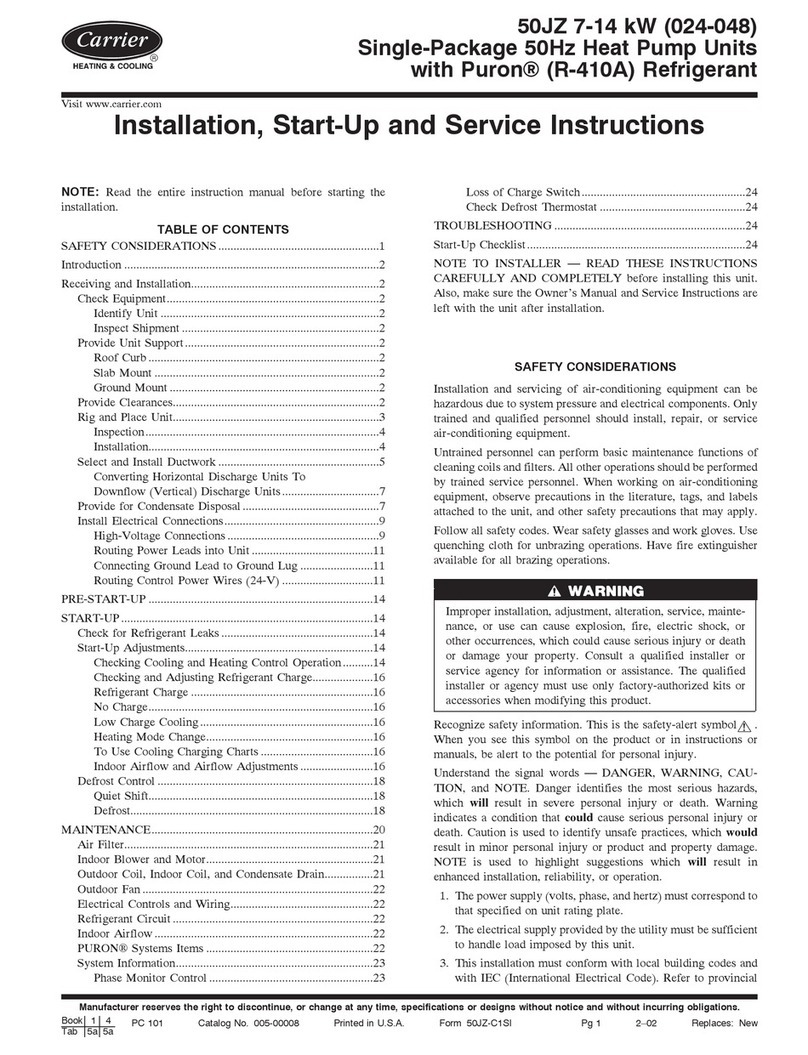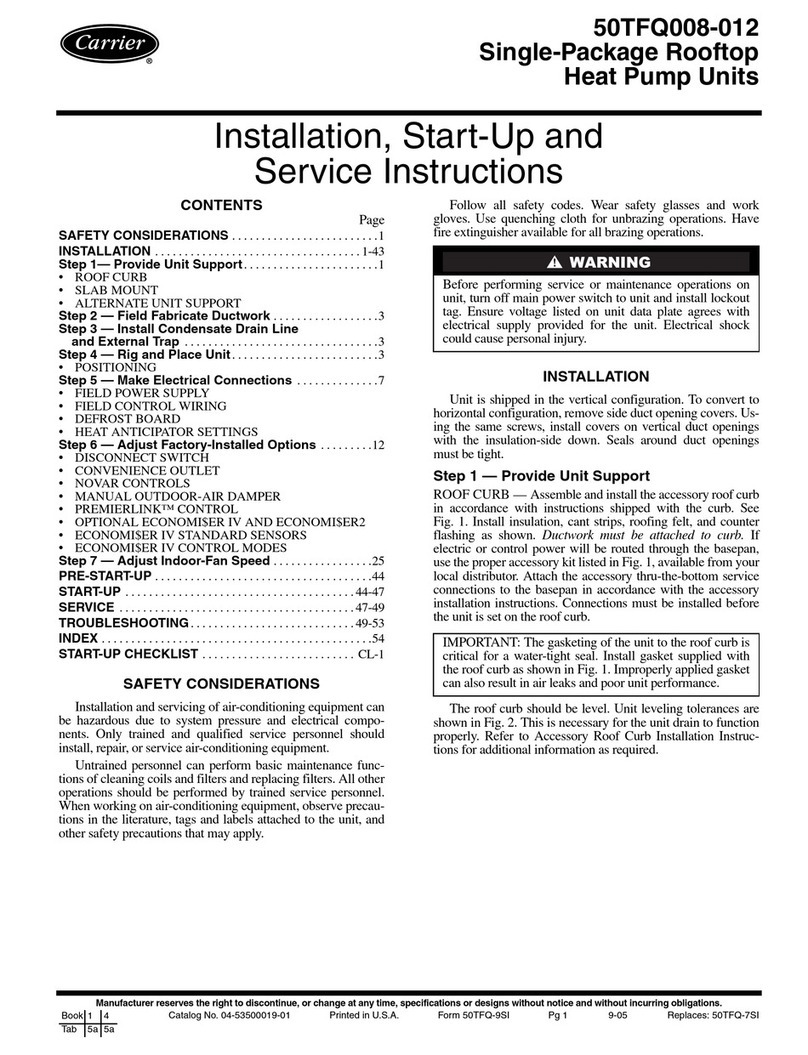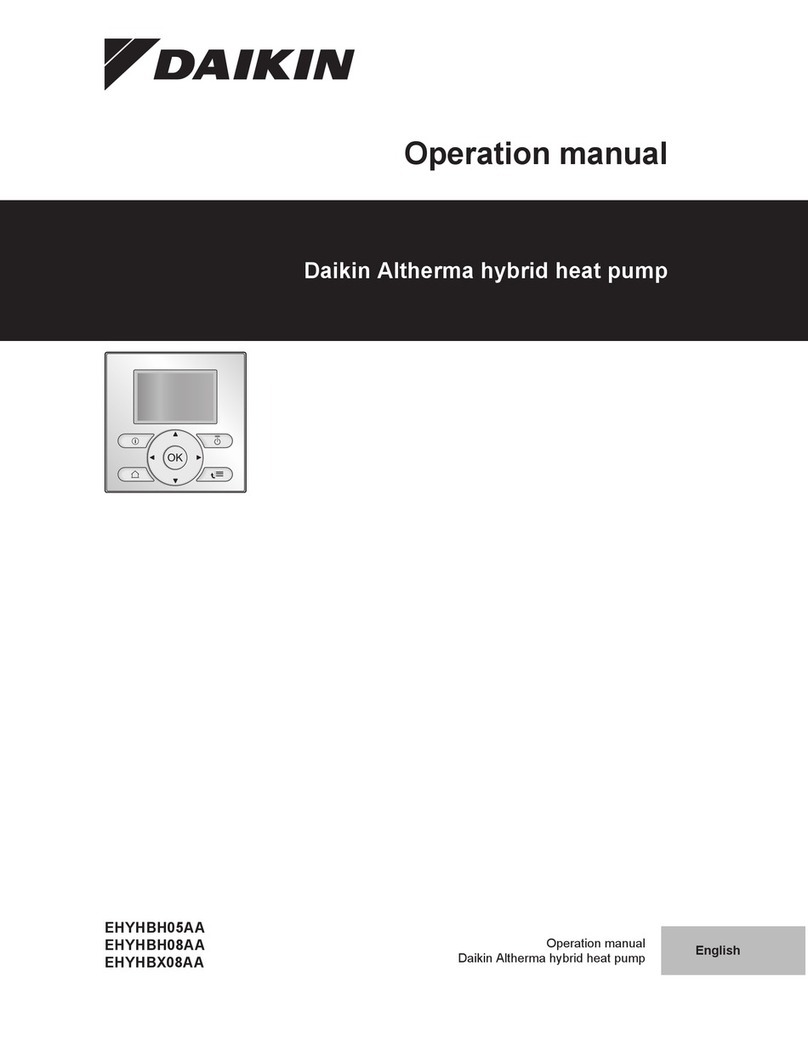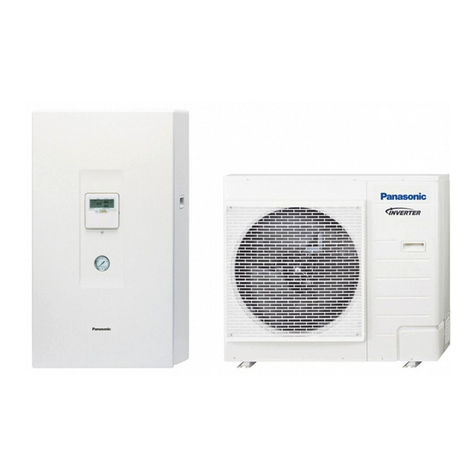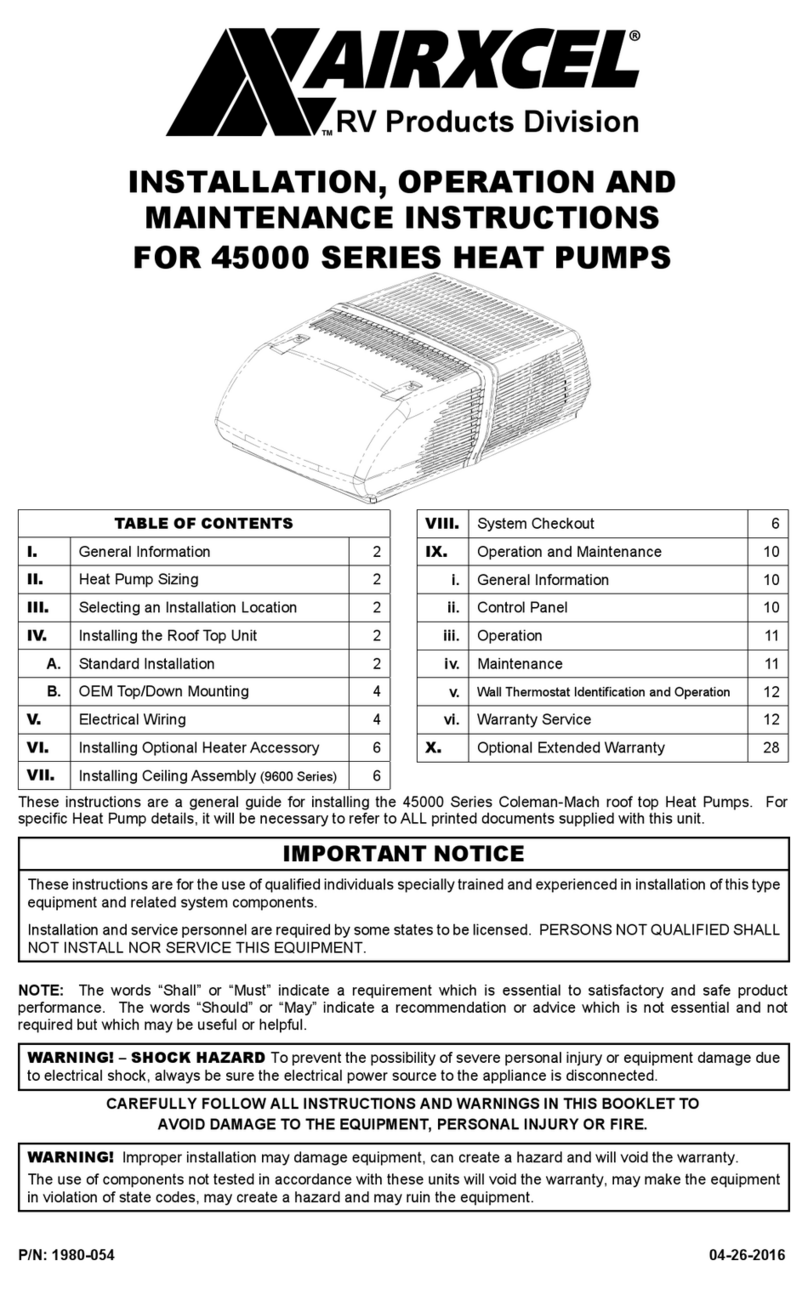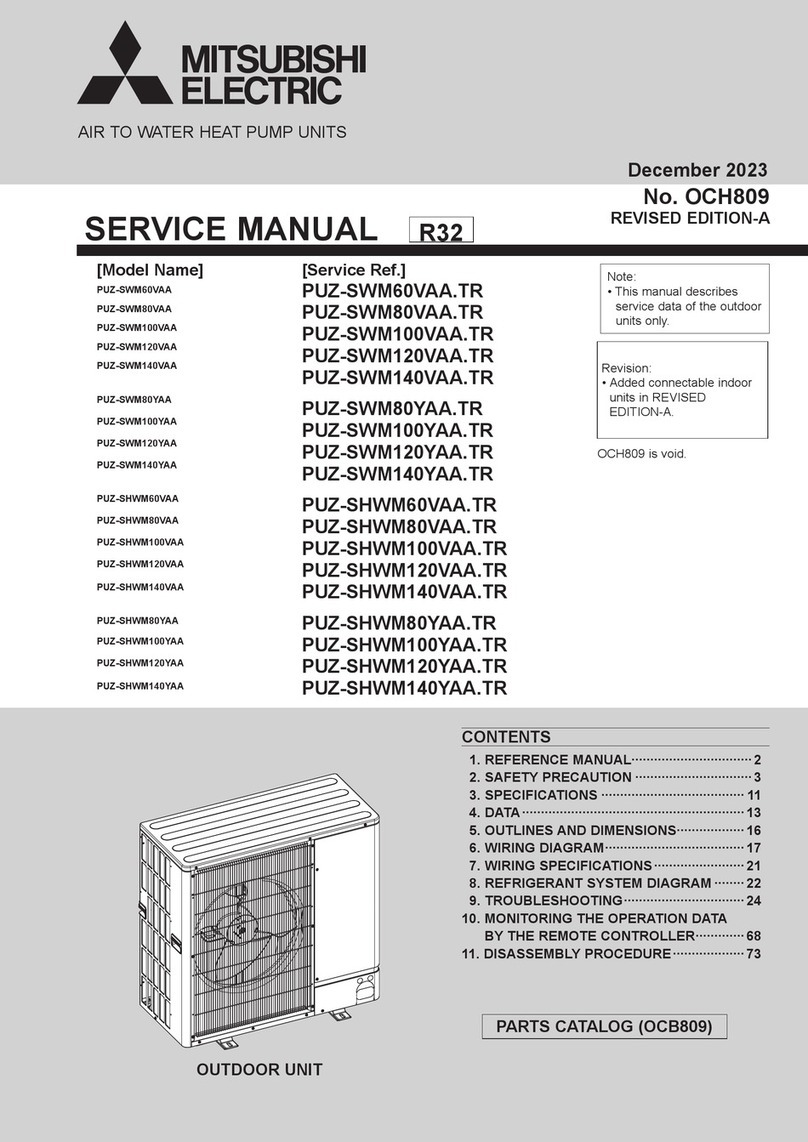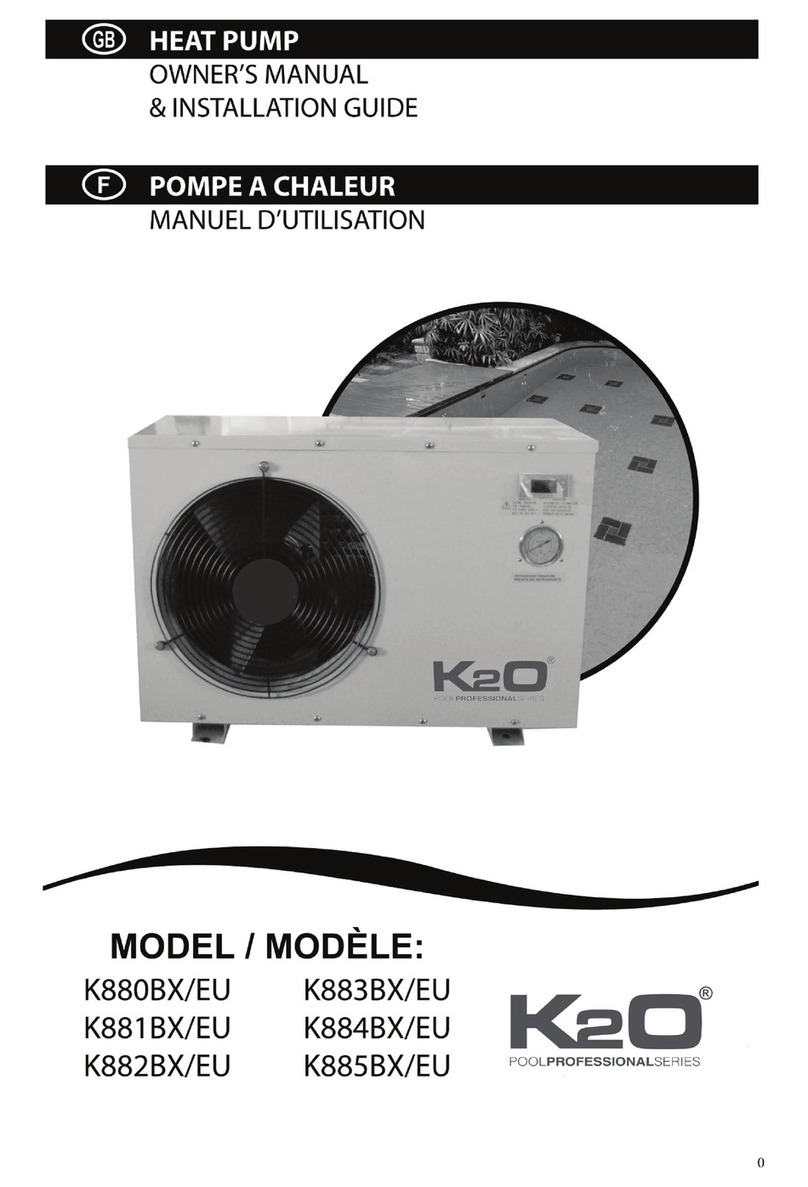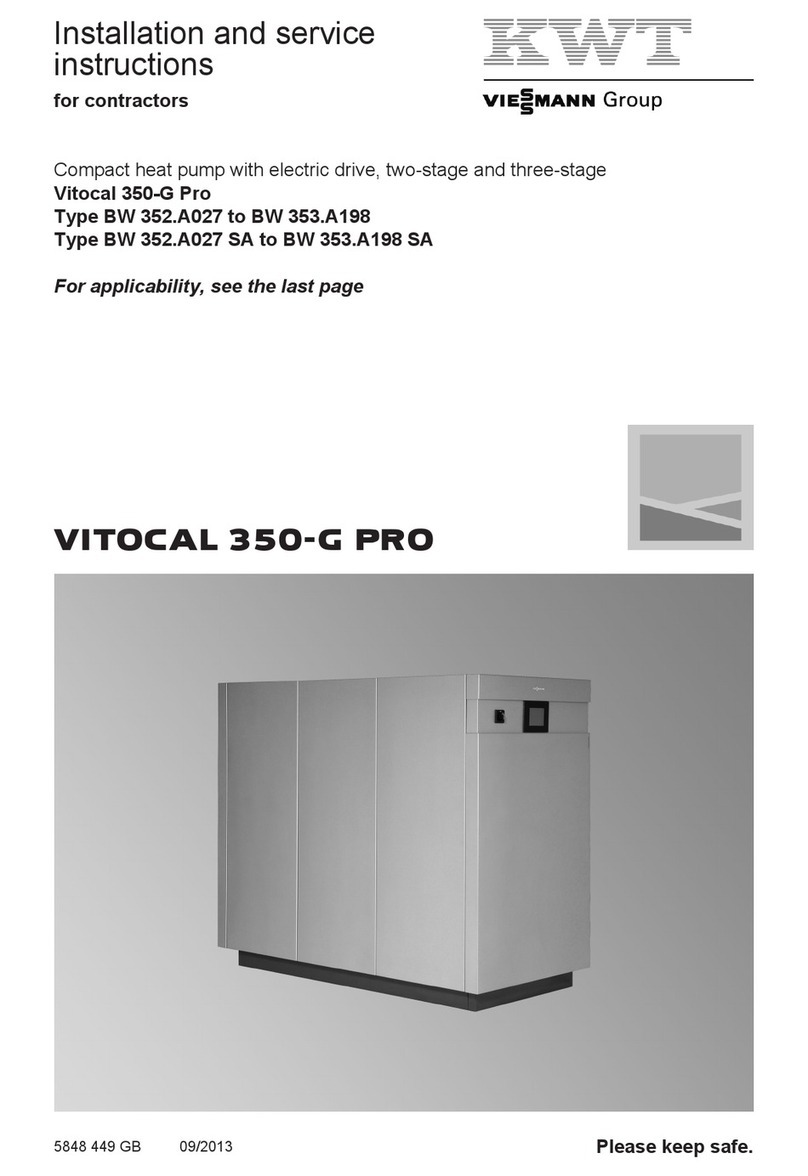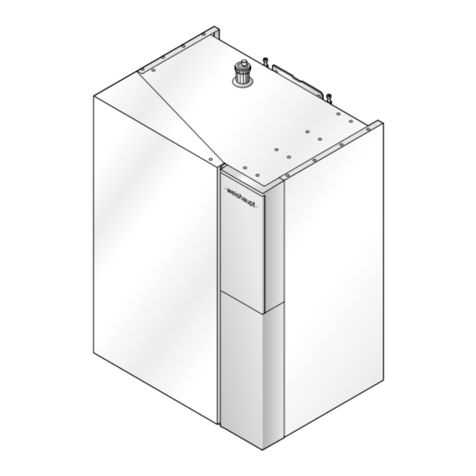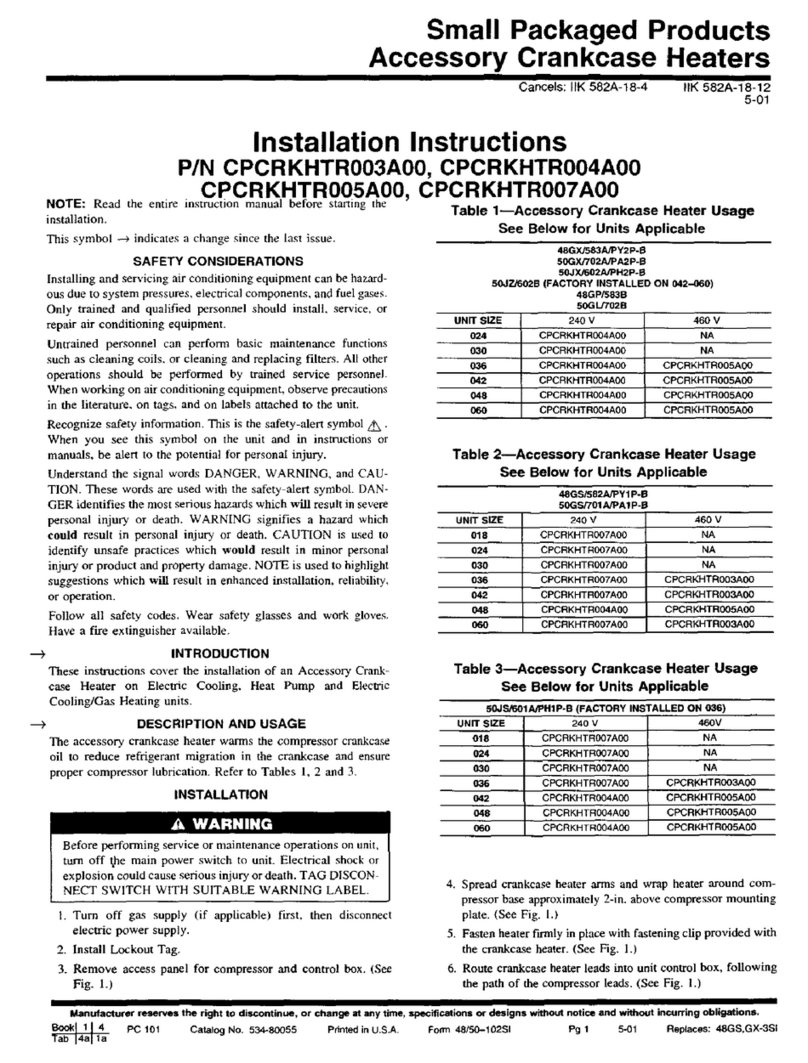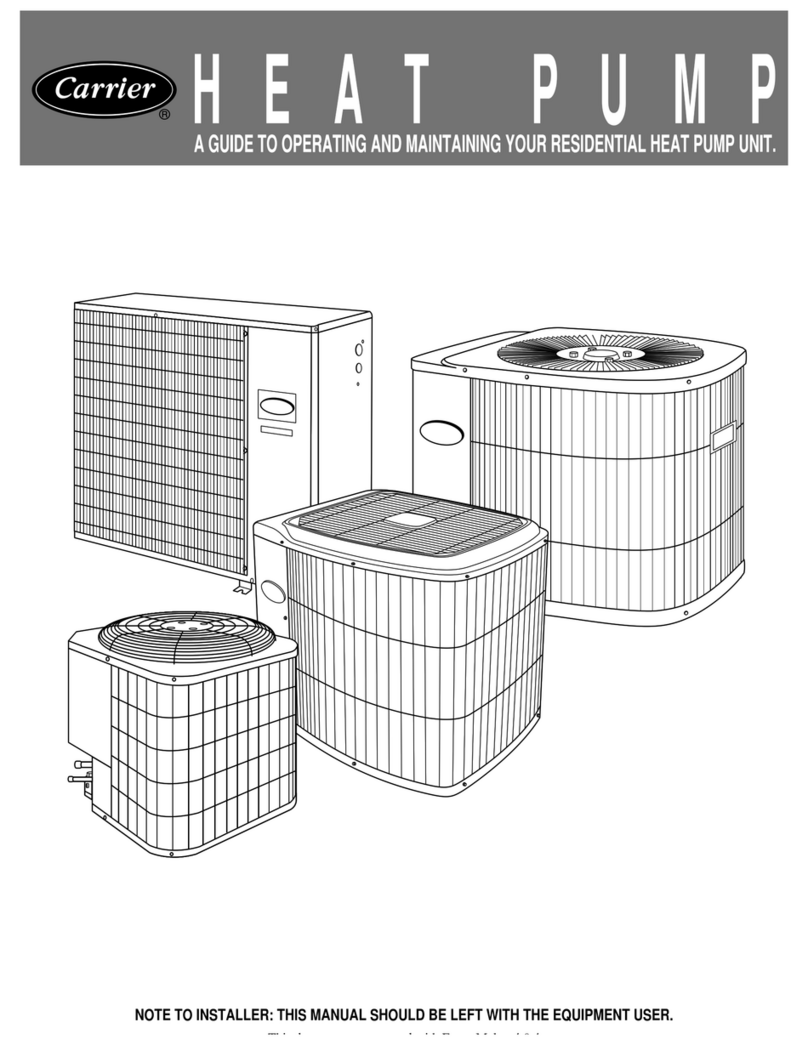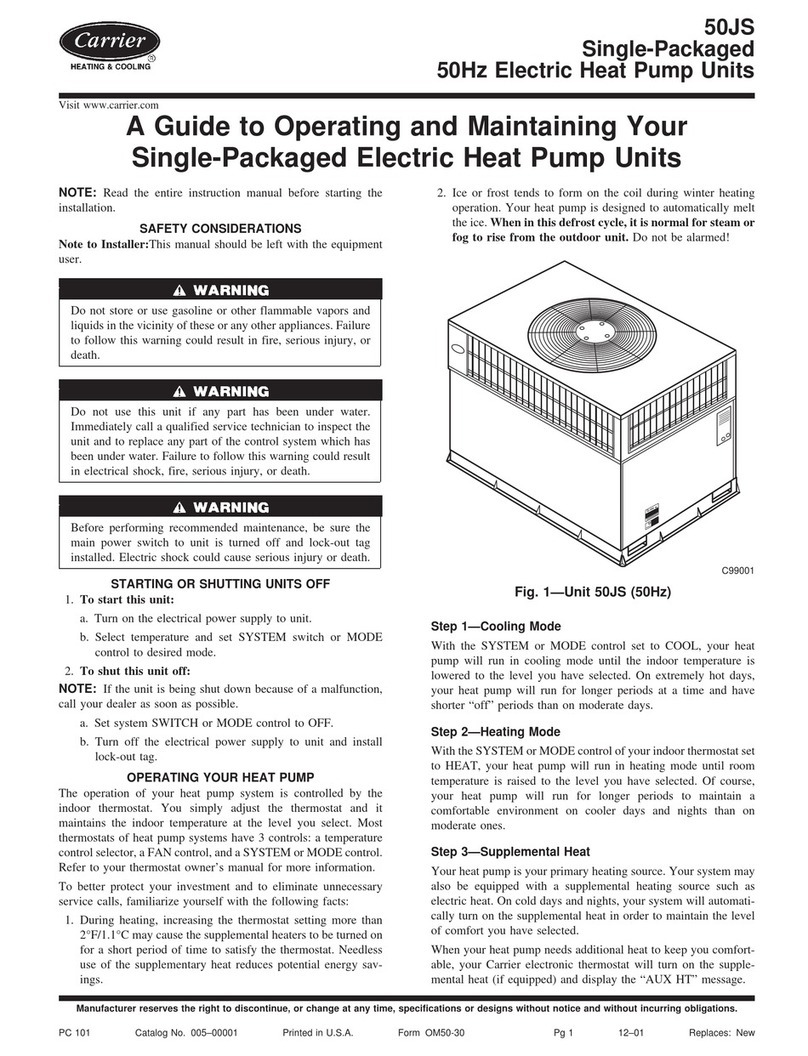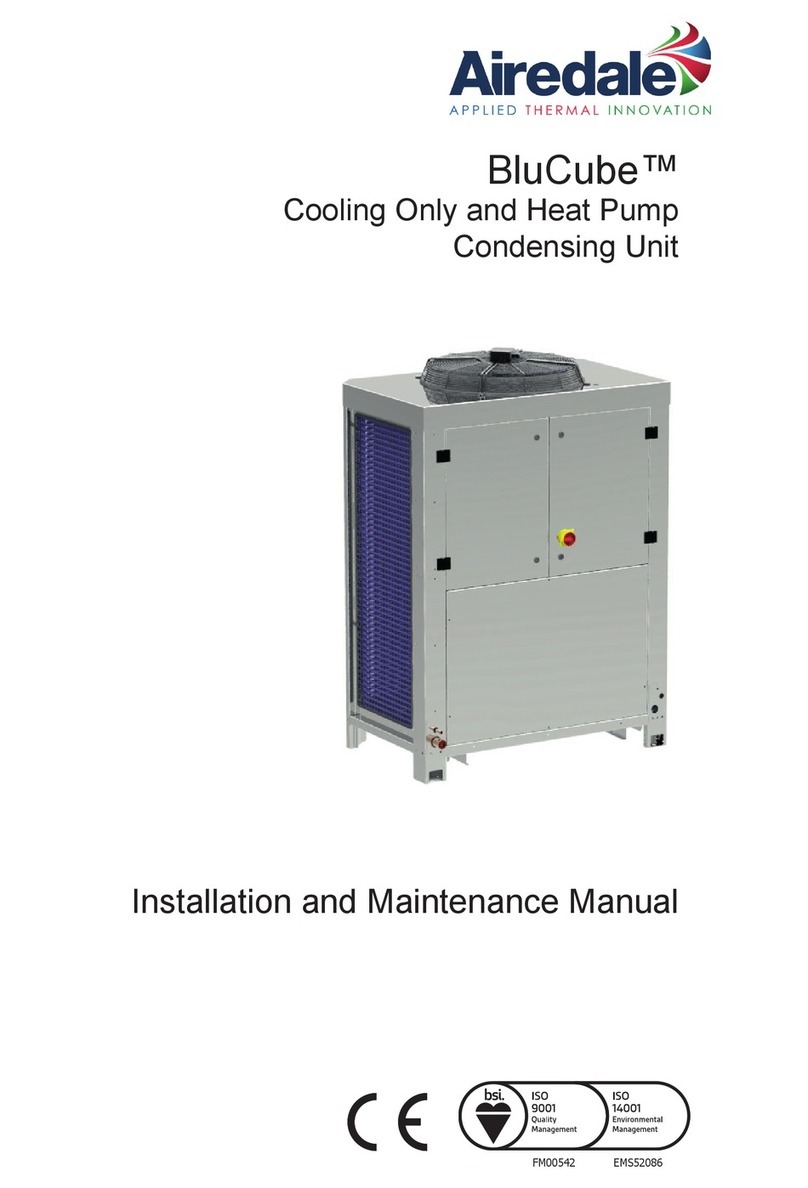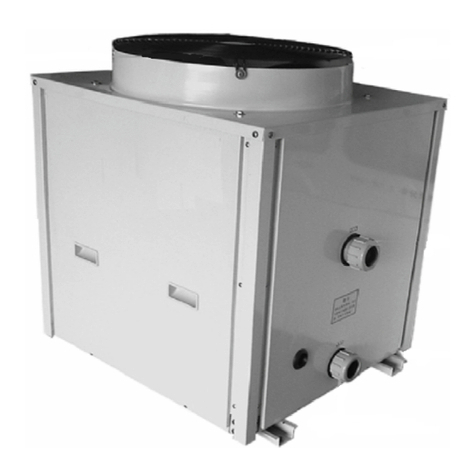
Step 8—Make Electrical Connections
To avoid personal injury or death, do not supply power to unit
with compressor terminal box cover removed.
Be sure field wiring complies with local and national fire, safety,
and electrical codes, and voltage to system is within limits shown
on unit rating plate. Contact local power company for correction of
improper voltage. See unit rating plate for recommended circuit
protection device.
NOTE: Operation of unit on improper line voltage constitutes
abuse and could affect unit reliability. See unit rating plate. Do not
install unit in system where voltage may fluctuate above or below
permissible limits.
NOTE: Use copper wire only between disconnect switch and
unit.
NOTE: Install branch circuit disconnect of adequate size per
NEC to handle unit starting current. Locate disconnect within sight
from and readily accessible from unit, per Section 440-14 of NEC.
ROUTE GROUND AND POWER WIRES
Remove access panel and control box cover to gain access to unit
wiring. Extend wires from disconnect through power wiring hole
provided and into unit control box. Size wires per NEC but not
smaller than minimum wire size shown in Product Data Digest.
The unit cabinet must have as uninterrupted or unbroken
ground to minimize personal injury if an electrical fault
should occur. The ground may consist of electrical wire or
metal conduit when installed in accordance with existing
electrical codes. Failure to follow this warning can result in an
electric shock, fire, or death.
CONNECT GROUND AND POWER WIRES
Connect ground wire to ground connection in control box for
safety. Connect power wiring to leads provided as shown in Fig.
12.
CONNECT CONTROL WIRING
Route 24v control wires through control wiring grommet and
connect to leads provided in control box. (See Table 3 and Fig. 13.)
Use No. 18 AWG color-coded, insulated (35°C minimum) wire. If
thermostat is located more than 100 ft from unit, as measured
along the control voltage wires, use No. 16 AWG color-coded wire
to avoid excessive voltage drop.
All wiring must be NEC Class 1 and must be separated from
incoming power leads.
The outdoor unit requires a minimum of 27-va, 24v control power.
FINAL WIRING CHECK
IMPORTANT: Check factory wiring and wire connections to
ensure terminations are secured properly. Check wire routing to
ensure wires are not in contact with tubing, sheet metal, etc.
Step 9—Install Electrical Accessories
GENERAL
Refer to the individual instructions packaged with kits or acces-
sories when installing. The liquid line solenoid valve accessory is
available on these units. See Fig. 14 for wiring diagram.
Available electrical accessories include latent capacity control. See
Table 3 and Fig. 13 for typical accessory wiring diagrams.
LATENT CAPACITY CONTROL (LCC)
The purpose of an LCC is to provide a dehumidification mode to
assure a 75 percent or less system sensible heat ratio. If indoor unit
installed contains an ICM blower (such as an FK4, FV4, or 40FK
fan coil or a 58UHV, 58UXV, or 58MVP gas furnace), no LCC is
required. Indoor products with ICM blowers have enough CFM
range to provide proper airflow for low-speed cooling. If indoor
unit installed has a standard PSC blower motor, the low-speed
airflow available is too great to assure 75 percent or less system
sensible heat ratio. The LCC for standard blower products consists
of a standard humidistat which opens contacts on humidity rise and
a pilot duty relay with 24v coil.
NOTE: If an LCC is desired, low-speed airflow must be main-
tained so that a minimum of 300 CFM/ton can be supplied during
high-speed LCC operation.
LCC Operation for Typical PSC Fan Coils
The standard blower connections for systems with typical PSC fan
coils is covered in Fig. 13A, B, and D. The blower runs in high
speed regardless if compressor operation is high or low speed.
When the LCC is wired according to Fig. 13A, B, or D and
humidity rises, the humidistat contacts open and de-energize the
relay. If relay is de-energized, the system operates on high-speed
compressor and high-speed airflow until humidistat closes. Fig.
l3C shows the wiring with a Carrier Thermidistat Control which
controls temperature and humidity level without the need for an
additional humidistat and relay.
LCC Operation for Typical PSC Furnaces
The standard blower connections of systems with typical PSC
furnaces is covered in Fig. 13J, K, N, P, Q, or S. The blower runs
in high or low speed in conjunction with compressor high- or
low-speed operation. When the LCC is wired according to Figs.
l3J, K, N, P, Q, or S and humidity rises, the humidistat contacts
open and de-energize the relay. If relay is de-energized, the system
operates on high-speed compressor and low-speed airflow until
humidistat closes. Figs. l3L and 13R show the wiring with a
Carrier Thermidistat Control which controls temperature and
humidity level without the need for an additional humidistat and
relay.
Step 10—Make Airflow Selections
AIRFLOW SELECTION FOR 58UHV, 58UXV FURNACES
The 58UHV, 58UXV Non-Condensing Variable-Speed Furnaces
provide high- and low-speed blower operation to match the
capacities of compressor high and low speeds. To select recom-
mended airflow, refer to Table 4 and the 58UHV, 58UXV
Installation Instructions. These settings are made on the furnace
airflow selector board by moving the appropriate color-coded
jumper wires. The ORANGE jumper wire should be set to the
HP—EFFY position for heat pump best efficiency or HP—CMFT
for heat pump enhanced comfort. The YELLOW COOL SIZE
Fig. 12—Line Power Connections
A91306
CONTACTOR
DISCONNECT
PER N. E. C. AND/ OR
LOCAL CODES
FIELD POWER
WIRING
FIELD GROUND
WIRING GROUND
LUG
7
